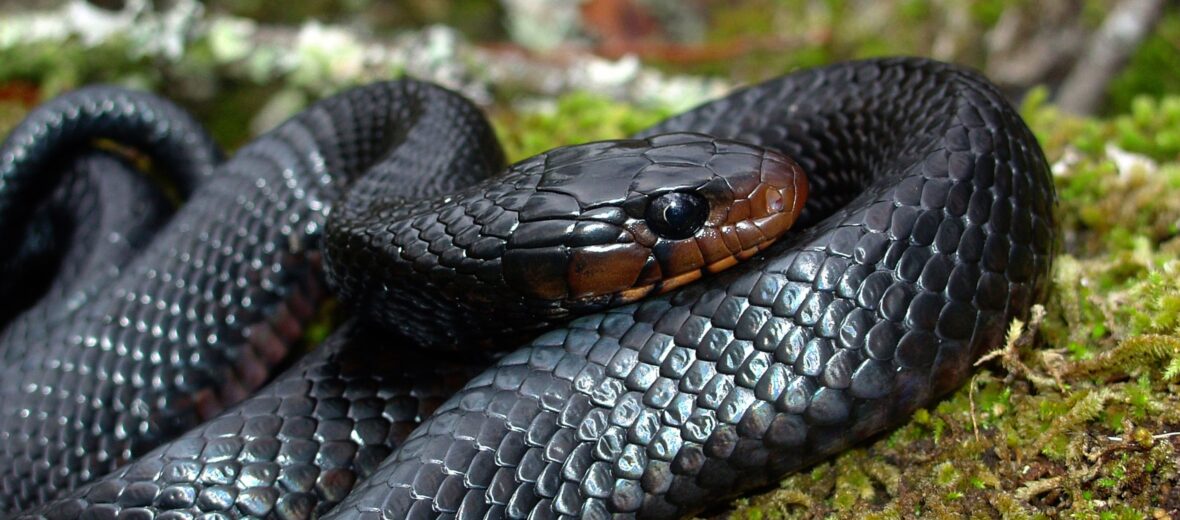
The beautiful eastern indigo snake, aka blue indigo snake, gopher snake, or
blue bull snake, is the largest native snake in North America and it is unmistakable with it’s shiny blue/black coloration. These nonvenomous colubrids can be found in southwestern South Carolina on south through all of Florida and west to southern Alabama and southeastern Mississippi. They prefer dry glades, stream bottoms, cane fields, flatwoods, hammocks, riparian thickets, and high ground with well-drained, sandy soil. Even though they face the threat of habitat destruction, over-collection for the pet trade, and hunting they are still listed as Least Concern by the IUCN. But they are becoming increasingly harder to find in the wild.
First the Stats…
Scientific name: Drymarchon couperi
Weight: Up to 11 lbs.
Length: Up to 8.5 feet
Lifespan: Up to 26 years
Now on to the Facts!
1.) Eastern indigo snakes are typically solitary. Only coming together to mate and fight other males for breeding rights.
2.) These snakes are diurnal (active during the day).
3.) Indigos will brumate (hibernation for reptiles) in gopher tortoise burrows, armadillo holes, hollow logs, and debris piles during the colder winter months.
4.) If threatened, they will vibrate their tail and flatten their neck out. But they seldom bite.
5.) A group of indigo snakes is called a nest, pit, den, bed, or knot.
But wait, there’s more on the eastern indigo snake!
6.) They prey on frogs, toads, turtles, lizards, small birds, small mammals, and eggs. They will also prey on other snakes. This is known as ophiophagy.
7.) Red-tailed hawks, alligators, and larger indigos all prey on eastern indigo snakes.
Did you know…?
Eastern indigo snakes are immune to rattlesnake venom and they will actively hunt rattlers.
8.) These snakes are polygynandrous (promiscuous) and the males mate with several females each season.
9.) Females lay up to 12 eggs that hatch in up to 3 months. The snakelets are born precocial (self sufficient).
10.) Sometimes eastern indigos will beat their prey to death by banging their prey against a hard surface till it dies, then will swallow it head first.
Now a Short Eastern Indigo Snake Video!
Be sure to share & comment below! Also, check out the Critter Science YouTube channel. Videos added frequently!
Want to suggest a critter for me to write about? Let me know here.




Leave a Reply